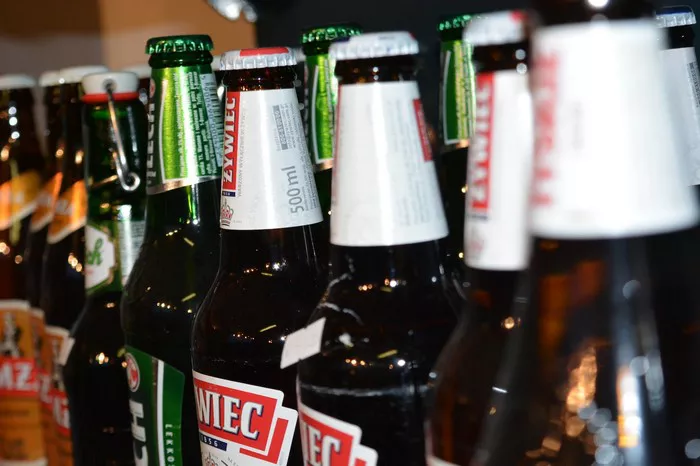Making homemade beer can be a rewarding and creative hobby that allows you to craft your unique brews, experiment with flavors, and share your creations with friends and family. In this article, we will guide you through the process of making homemade beer, from selecting the ingredients to bottling your brew. Get ready to embark on a flavorful journey into the world of homebrewing!
1. Gather Your Equipment
Before you begin, make sure you have the necessary equipment:
Large pot for boiling
Fermentation vessel (such as a glass carboy or plastic bucket)
Airlock and stopper
Long-handled spoon
Hydrometer (for measuring specific gravity)
Thermometer
Sanitization supplies (e.g., sanitizer solution)
Bottles, caps, and a capper or bottling wand
2. Choose Your Ingredients
Selecting the right ingredients is crucial for your beer’s flavor profile. Here are the basic components:
Malt: You’ll need malt extract or crushed malted grains. The type of malt will influence your beer’s color and flavor.
Hops: Hops provide bitterness, flavor, and aroma to your beer. Different hop varieties offer unique characteristics.
Yeast: Yeast is responsible for fermentation. Choose a yeast strain that complements your beer style.
Water: Ensure your water is free of chlorine and contaminants. You may need to treat it if necessary.
Optional Additions: Depending on your recipe, you might include spices, fruit, or other flavorings.
3. Brew Your Beer
The brewing process involves several key steps:
Mashing: Steep the crushed grains in hot water to extract sugars and flavors.
Boiling: Combine the malt extract, hops, and water, then boil the mixture. Hops are added at different times for bitterness and aroma.
Cooling: Rapidly cool the boiled wort to the fermentation temperature (usually around 70°F or 21°C).
4. Fermentation
Transfer the cooled wort to the fermentation vessel, add yeast, and seal it with an airlock. Allow the beer to ferment for one to two weeks, depending on the recipe and style. Monitor the fermentation by checking the airlock for bubbling.
5. Bottling
Once fermentation is complete, it’s time to bottle your beer:
Prepare Bottles: Clean and sanitize your bottles and caps.
Prime: Add a priming sugar solution to the beer to carbonate it naturally.
Fill and Cap: Fill each bottle with beer using a bottling wand or siphon and cap them securely.
Age: Allow your beer to age for a few weeks or longer, depending on the style. This will allow the flavors to mature.
6. Enjoy Your Homemade Beer
Chill your beer in the refrigerator, and when it’s cold, crack open a bottle and savor your creation. Share your homemade beer with friends and family to enjoy the fruits of your labor.
Conclusion
Homebrewing beer is a rewarding and creative endeavor that allows you to explore different flavors, styles, and brewing techniques. With the right equipment, quality ingredients, and patience, you can craft your unique brews and join the vibrant community of homebrewers. Whether you’re a novice or experienced brewer, making homemade beer is a journey filled with delicious discoveries and the satisfaction of creating something truly special.
FAQs about making homemade beer:
Q1: Is it legal to make homemade beer for personal consumption?
A1: In many countries, including the United States, it is legal to brew beer for personal consumption as long as you adhere to certain regulations, such as quantity limits and age restrictions. It’s essential to research and follow the laws in your region.
Q2: Do I need a lot of space and specialized equipment to make homemade beer?
A2: You don’t need a vast amount of space, but you will need some specific equipment for brewing, fermenting, and bottling. Homebrewing kits are available that provide the essential tools and ingredients to get started.
Q3: How long does it take to make homemade beer from start to finish?
A3: The time required to make homemade beer can vary depending on the beer style and fermentation time. On average, the brewing and fermentation process can take approximately two to six weeks. Aging may take additional time.
Q4: Can I create my recipes and experiment with ingredients in homemade beer?
A4: Absolutely! Homebrewing allows for creativity and experimentation. You can develop your recipes, adjust ingredients, and fine-tune flavors to match your preferences.
Q5: Are there specific safety precautions I should take while homebrewing?
A5: Yes, safety is crucial when brewing beer. Be mindful of handling hot liquids, sanitizing equipment, and properly storing ingredients. Follow good brewing practices to ensure a safe and enjoyable brewing experience.
Q6: How do I troubleshoot common issues that may arise during the brewing process?
A6: Common issues in homebrewing include contamination, off-flavors, and fermentation problems. Online homebrewing communities and resources provide guidance on troubleshooting these issues and finding solutions.
Q7: What are some beginner-friendly beer styles for those new to homebrewing?
A7: Styles like American Pale Ale (APA), Blonde Ale, and Wheat Beer (e.g., Hefeweizen) are often recommended for beginners due to their relatively simple recipes and forgiving nature.
Q8: Can I reuse bottles from commercial beers for my homemade brews?
A8: Yes, you can reuse bottles from commercial beers, but they must be thoroughly cleaned and sanitized to prevent contamination. Ensure that they are capped securely with new caps.
Q9: How do I know when my homemade beer is ready for bottling?
A9: The readiness for bottling is typically determined by taking specific gravity readings with a hydrometer. Stable readings over several days indicate that fermentation is complete.
Q10: Can I store my homemade beer for an extended period, and does it improve with age?
A10: Some beer styles, such as strong ales and certain Belgian beers, can benefit from aging. Proper storage conditions, including temperature and light control, are essential for long-term aging. Not all beer styles improve with age, so research is key.


